|
|
|
England's National Nature ReservesPeter Marren
Poyser Natural History
Poyser
2002
"This authoritative book, produced with the full co-operation of English Nature, is the first book to be devoted to the subject of the 140 Nature Reserves of England. It looks at the background and philosophy of National Nature Reserves and at the role they play in protecting wildlife and landforms, providing outdoor laboratories for environmental research and demonstrating the techniques of land management for nature conservation. The text is attractively illustrated with line drawings and over 60 superb colour photographs depicting some of England's most beautiful and dramatic natural landscapes."
|
Buy from amazon.co.uk 
|
|
Scotland's Nature in Trust: The National Trust for Scotland and its Wildland and Crofting ManagementJ. Laughton Johnston
Illustrations: John Busby
Poyser Natural History
Poyser
2002
"The National Trust for Scotland is one of the largest landowners in Scotland, owning one per cent of its countryside. Half of the Trust land is designated for its natural heritage in one form or another, one being a World Heritage site - the highest accolade that can be bestowed. This comprehensive title looks at the Trust's credentials for natural heritage management and examines the properties it owns. Could or should the Trust expend its resources equally across its natural heritage responsibilities? How does it fulfill its role as landlord and as part of the local community? These questions and others are answered in this book. The opening chapter briefly discusses the history of the Trust and discusses some of the general countryside management issues of the day with which the Trust has to grapple. There then follows chapters on ten properties which look critically and intimately at their management. The final chapter sums up where the Trust stands today as a natural heritage manager for Scotland and suggests that there is an opportunity ahead for radical change."
|
Buy from amazon.co.uk 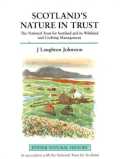
|
|
Enjoying Moths Roy Leverton
Poyser
2001
"This excellent book presents a fascinating insight into the study of moths. It offers much more than the various identification guides currently available. This is no dry academic tome. Roy Leverton conveys his lifelong enthusiasm for moths in an immensely readable, easygoing style, while the text is liberally illustrated with line drawings and the author's own superb photographs of living moths." Contents include: finding moths in the day and at night; responsible use of light traps; successful techniques for finding and rearing caterpillars; how to attract moths to the garden and photographic techniques.
|
Buy from amazon.co.uk 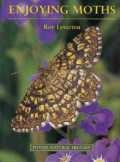
|
|
Orkney NatureR.J. Berry
Poyser Natural History
Poyser
2000
"The Orkneys have been strangely neglected by naturalists when compared to Shetland or Western Scotland, although they have long been a place of pilgrimage for archaeologists and historians. This work seeks to make available the islands' animals, plants and scenic history to casual readers as well as specialists. The Orkney Islands are a special place, both in terms of their natural history and human inhabitants. Their rich coastal habitats host significant seabird colonies and marine communities. Their northerly position provides a major land fall for migratory birds."
|
Buy from amazon.co.uk 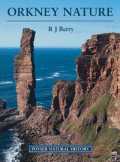
|
|
A Naturalist's ShetlandJ.Laughton Johnston
Poyser Natural History
Poyser
1999
"This book is only the second to describe all the wildlife of the Shetland Islands and the first to comprehensively cover their history since the last Ice Age, as well as the human impacts of the Neolithic, Bronze, and Iron Age cultures and the Norse influences from Scandinavia. It critically observes the costs and benefits of a modern economy, both to the people and the natural scene. 12 chapters describe the ecology, flora and fauna, marine fisheries, Fair Isle, local and visiting naturalists and the oil industry. The closing chapter examines today's environmental changes in the context of those of the last 12000 years and draws lessons for the future. Written for the general reader and keen naturalist, this book is lavishly illustrated with photographs and graced with evocative sketches by John Busby. 65 figures, tables, maps and diagrams illustrate and clarify points in the text."
|
Buy from amazon.co.uk 
|
|
Britain's Rare FlowersPeter Marren
Poyser Natural History
Poyser
1999 (2nd ed 2000)
"The book looks at the evolution of individual species and of plant communties, the threats (natural and anthropogenic) that have caused declines and extinctions in some plant populations, and the various conservation efforts which have been made to protect them and to encourage their numbers to grow. Written in a lively and jargon-free style, with numerous examples and anecdotes, and illustrated throughout with gorgeous colour photographs, this lovely, engaging and accessible book is a must for all wild flower enthusiasts."
|
Buy from amazon.co.uk 
|
|
The History of British MammalsDerek W. Yalden
Poyser Natural History
Poyser
1999
"As ice retreated from Britain 15,000 years ago, a host of large mammals including reindeer, wild horses, wooly mammoths, moose, wolves, brown bears, lynxes and wolverines established itself in Britain. The largest surviving wild land mammal today, the red deer, the largest contemporary land carnivore, the badger and another 65 or so extant wild mammals included about a quarter of the wild mammals that have been introduced in the last 15,000 years. The contemporary fauna, however, is largely dominated by domestic animals, such as cattle, sheep, pigs and humans. This book explores the fate of the large extinct species, as well as how, why, and when the introduced species appeared."
|
Buy from amazon.co.uk 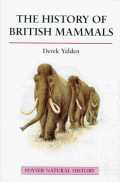
|
|
The Atlas of European MammalsA.J. Mitchell-Jones et al
Poyser Natural History
Poyser
1999
"The Atlas of European Mammals is the first project of the Societas Europaea Mammalogia (SEM), founded in Paris in 1988, and is the result of more than 10 years work by specialists throughout Europe. Under the supervision of an editorial committee, coordinators have collected and validated distribution data for every European country using an agreed species list and a standard mapping system. This landmark volume presents maps of 194 species plotted on a 50 km UTM grid and based entirely on field observations. Over 93,000 records are mapped with separate symbols for data collected before or after 1970. Where appropriate, recent extinctions have been taken into account so that these maps represent the most up-to-date picture possible of the distribution of each species in Europe. Specialist authors have complemented the maps with a brief overview of each species, including details of distribution, habitat and population status. As well as the maps and species accounts, The Atlas of European Mammals also contains a complete species list for the whole European biogeographic region, with details of the international legal and conservation status of each species and their common names in 33 European languages."
|
Buy from amazon.co.uk 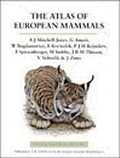
|
|
The Hippos: Natural History and ConservationKeith S Eltringham
Poyser Natural History
Poyser
1999
"Following a general introduction, there is a detailed description of hippo anatomy and physiology, including many fascinating and little known facts about their skin structure and physiology. The complex question of hippo stomach anatomy, and its impact on their diet and nutrition, is critically reviewed. The fossil history of hippos is then considered and the recently claimed relationship with whales is examined. Subsequent chapters are devoted to their social biology and ecology, including descriptions of their breeding and feeding ecology. Several extraordinary instances of carnivory, including an instance of cannibalism, are described. A chapter on diseases and parasites also discusses the relations between hippos and other species, including crocodiles, to which they appear to be dominant. A consideration of the hippo's relationships with its human neighbors and the prospects for its long-term conservation gives an important view of current conservation concerns. The book closes with three chapters devoted to the results of the author's recent survey on the distribution and abundance of the common hippo throughout Africa."
|
Buy from amazon.co.uk 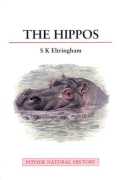
|
|
Long-Eared BatsSusan M. Swift
Poyser Natural History
Poyser
1998
"Long-Eared Bats examines the biology, ecology and behaviour of two European bat species which are distinctive, easily recognized, and familiar to most naturalists. These "friendly" bats live in close proximity to humans and are examples of evolutionary diversity. This book gives a comprehensive review of Plecotus auritus and Plecotus austriacus and investigates their behaviour and considers the full range of conservation issues relating to the species. Topics include identifying the species, foraging, reproductive biology, social organization, and the effects of man-made alterations to the environment and proposed conservation methods."
|
Buy from amazon.co.uk 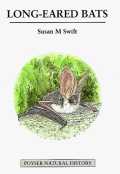
|
|
Natural History of MothsMark Young
Illustrations: Lynn Wells
Poyser Natural History
Poyser
1997 (reprint 2002)
"Uniting the results of amateur study with the latest scientific research to paint a broad picture of all aspects of moth biology and ecology, this text uses many examples from the moth faunas of Britain and Europe to shed light on what is largely a neglected group. The breeding, feeding, distribution and life-history and ecology of moths are described as well as the more specialized aspects of their behaviour. Their interactions with host plants, their anti-predator responses, and the threats arising from the degradation of natural habitats are also all explored in this illustrated text."
|
Buy from amazon.co.uk 
|
|
The Newts and Salamanders of EuropeRichard Griffiths
Poyser Natural History
Poyser
1996 (reprint 2002)
"Nearly thirty years after the publication of the last detailed book on the newts and salamanders of Europe, this book at last provides a much needed, modern coverage of the ecology, behaviour, evolution and conservation of these fascinating amphibians. It shows how the diversity of newt and salamander life-styles underlines how this relatively small group of animals has managed to survive in such diverse habitats as underground caves, mountain tops, tropical forests and the Siberian tundra. The species accounts are accompanied by notes and maps on distribution, habitat requirements and behaviour, as well as colour photographs of every species."
|
Buy from amazon.co.uk 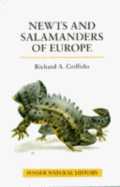
|
|
BadgersErnest Neal and Christopher Cheeseman
Poyser Natural History
Poyser
1996 (reprint 2004)
This book is a major revision of Neal's The Natural History of Badgers which was published in 1986. The book summarises current knowledge of the badger.
|
Buy from amazon.co.uk 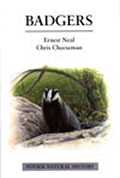
|
|
Naturalized Fishes of the WorldChristopher Lever
Poyser Natural History
Poyser
1996
"Fish are an important part of a regions's biological diversity and a human resource throughout the world. The human interest in fish has inevitably led to the widespread practice of introducing various species to waters outside their normal range. This book describes when, where, why, how, and by whom the alien inland fishes now living in a wild state throughout the world were introduced. It also explores how they subsequently became naturalizd and what, if any, effects they have had in their new environment."
|
Buy from amazon.co.uk 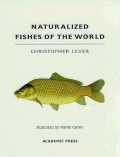
|
|
HedgehogsNigel Reeve
Poyser Natural History
Poyser
1994
"In this book, the author provides a guide to the world's hedgehogs in general and also treats the European species in greater detail than ever before, with close attention to results of the latest research. Coverage includes all aspects of behaviour and ecology, including their extra-ordinary defensive adaptions, feeding, breeding, and hibernation. The study and care of hedgehogs in the garden also is presented. A useful appendix provides the basics of hedgehog care and treatment, and will be invaluable to veterinarians working with sick animals."
|
Buy from amazon.co.uk 
|
|
ElephantsClive Spinage
Poyser Natural History
Poyser
1994
"This volume brings together the latest research and little known observations of scholars, travelers and those who for centuries have worked with the Asian elephant as a beast of burden. The author blends these diverse sources in an easy-to-read style to provide a full and fascinating account of the elephant both in the wild and as long time associate of man's activities. Wide-ranging in geographical and temporal terms, it covers both African and Asian elephants as well as their extinct relative, the mammoth. Elephants discusses their origins, evolution, anatomy, ecology, and behavior. It covers the debate that countries such as Kenya and Botswana have suffered an overpopulation of elephants, and describes the ecology of this debate and its relevance to the ivory trade, along with the history of the trade. The book concludes by examining the domestication of the elephant and its practice both past and present."
|
Buy from amazon.co.uk 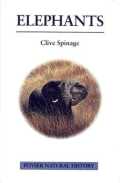
|
|
Naturalized Animals: The Ecology of Successfully Introduced SpeciesChristopher Lever
Poyser Natural History
Poyser
1994
"This work discusses the ecological and economic impacts that naturalized vertebrates have had on the native fauna and flora of the countries to which they have been introduced - either deliberately or accidentally - by man, and in which they have become established." Contents: The Ecology of Naturalized Animals; The Ecological Impact of Naturalized Herbivores; The Ecological Impact of Naturalized Predators; Competition Between Naturalized and Native Species; Hybridization Between Naturalized and Native Species; Naturalized Animals as Prey Species; The Impact on Crops of Naturalized Birds; The Introduction of Parasites, Pathogens, And Diseases By Naturalized Animals; The Ecological Impact of Naturalised Reptiles and Amphibians; The Ecological Impact of Naturalized Fishes; The Ecological Consequences of Relationships Between Naturalized and Native Species; The Ecological Impacts of Naturalized Species Compared."
|
Buy from amazon.co.uk 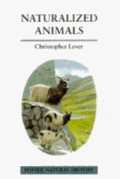
|
|
The MinkNigel Dunstone
Poyser Natural History
Poyser
1993
"This book is the first comprehensive and readable account of the species. It describes how mink have evolved to exploit a wide variety of habitats: river, lake, marsh and coast, and goes on to detail the various aspects of their ecology and behaviour. In the concluding chapters, an in-depth look at the two subjects most popularly associated with mink, the fur trade and the effect of feral mink on other wildlife will significantly contribute to informed debate and sensible management of the species."
|
Buy from amazon.co.uk 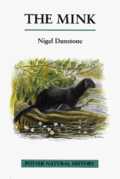
|
|